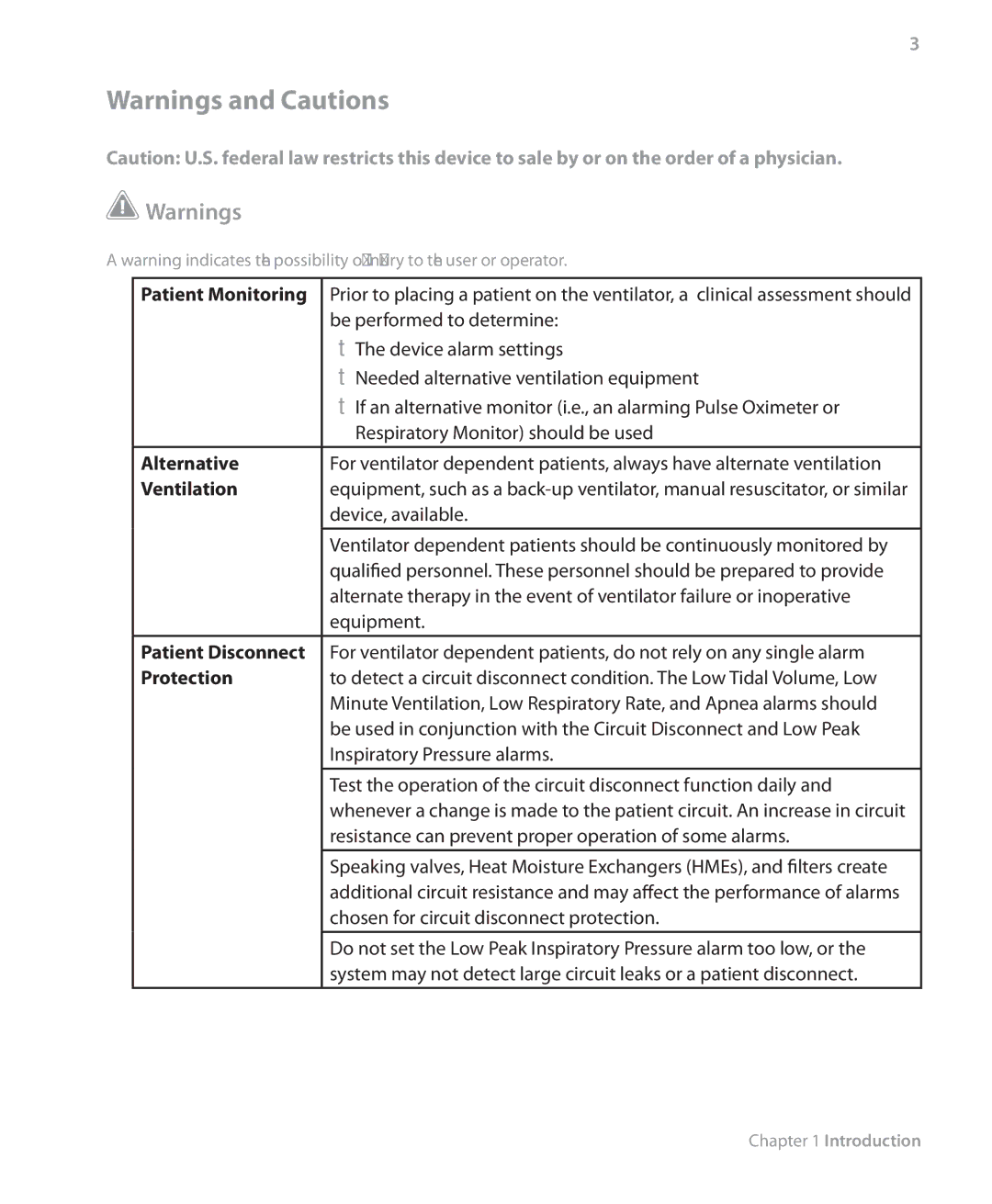3
Warnings and Cautions
Caution: U.S. federal law restricts this device to sale by or on the order of a physician.
![]() Warnings
Warnings
A warning indicates the possibility of injury to the user or operator.
Patient Monitoring | Prior to placing a patient on the ventilator, a clinical assessment should |
| be performed to determine: |
| •• The device alarm settings |
| •• Needed alternative ventilation equipment |
| •• If an alternative monitor (i.e., an alarming Pulse Oximeter or |
| Respiratory Monitor) should be used |
Alternative | For ventilator dependent patients, always have alternate ventilation |
Ventilation | equipment, such as a |
| device, available. |
| Ventilator dependent patients should be continuously monitored by |
| qualified personnel. These personnel should be prepared to provide |
| alternate therapy in the event of ventilator failure or inoperative |
| equipment. |
Patient Disconnect | For ventilator dependent patients, do not rely on any single alarm |
Protection | to detect a circuit disconnect condition. The Low Tidal Volume, Low |
| Minute Ventilation, Low Respiratory Rate, and Apnea alarms should |
| be used in conjunction with the Circuit Disconnect and Low Peak |
| Inspiratory Pressure alarms. |
| Test the operation of the circuit disconnect function daily and |
| whenever a change is made to the patient circuit. An increase in circuit |
| resistance can prevent proper operation of some alarms. |
| Speaking valves, Heat Moisture Exchangers (HMEs), and filters create |
| additional circuit resistance and may affect the performance of alarms |
| chosen for circuit disconnect protection. |
| Do not set the Low Peak Inspiratory Pressure alarm too low, or the |
| system may not detect large circuit leaks or a patient disconnect. |
Chapter 1 Introduction
